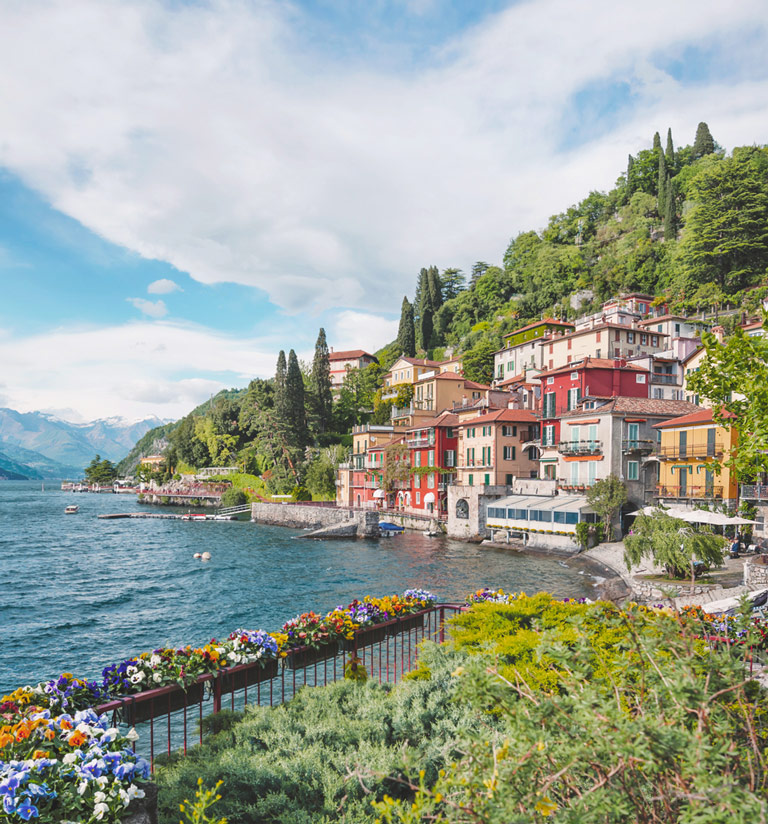

Lake Como, with its total surface area of 146 square kilometres, is the third largest lake in Italy after Lakes Garda and Maggiore. The lake is of glacial origin and it plunges to a depth of 410 metres (approx. 1,345 feet) making it the deepest lake in Europe. Lake Como is shaped like an inverted Y and therefore has three distinct branches: to the north the Colico branch, to the south east the Lecco branch and to the south west the most famous branch, that of Como. Lake Como boasts the longest perimeter of all the lakes due to this distinctive upside down Y shape – a total of 171 kilometres.
The lake is surrounded by mountains with the highest peak being Mt.Legnone (approx. 8,600 feet high) which dominates the town of Colico at the northern tip of the lake. The most important river is the Adda which is also the lake’s only outlet. It leaves the lake at Lecco, at the far tip of the south eastern branch of the lake, flowing into the smaller lakes of Garlate and Olginate before heading south of Milan to join the River Po.


